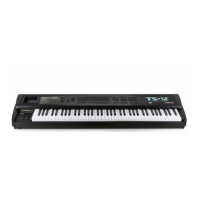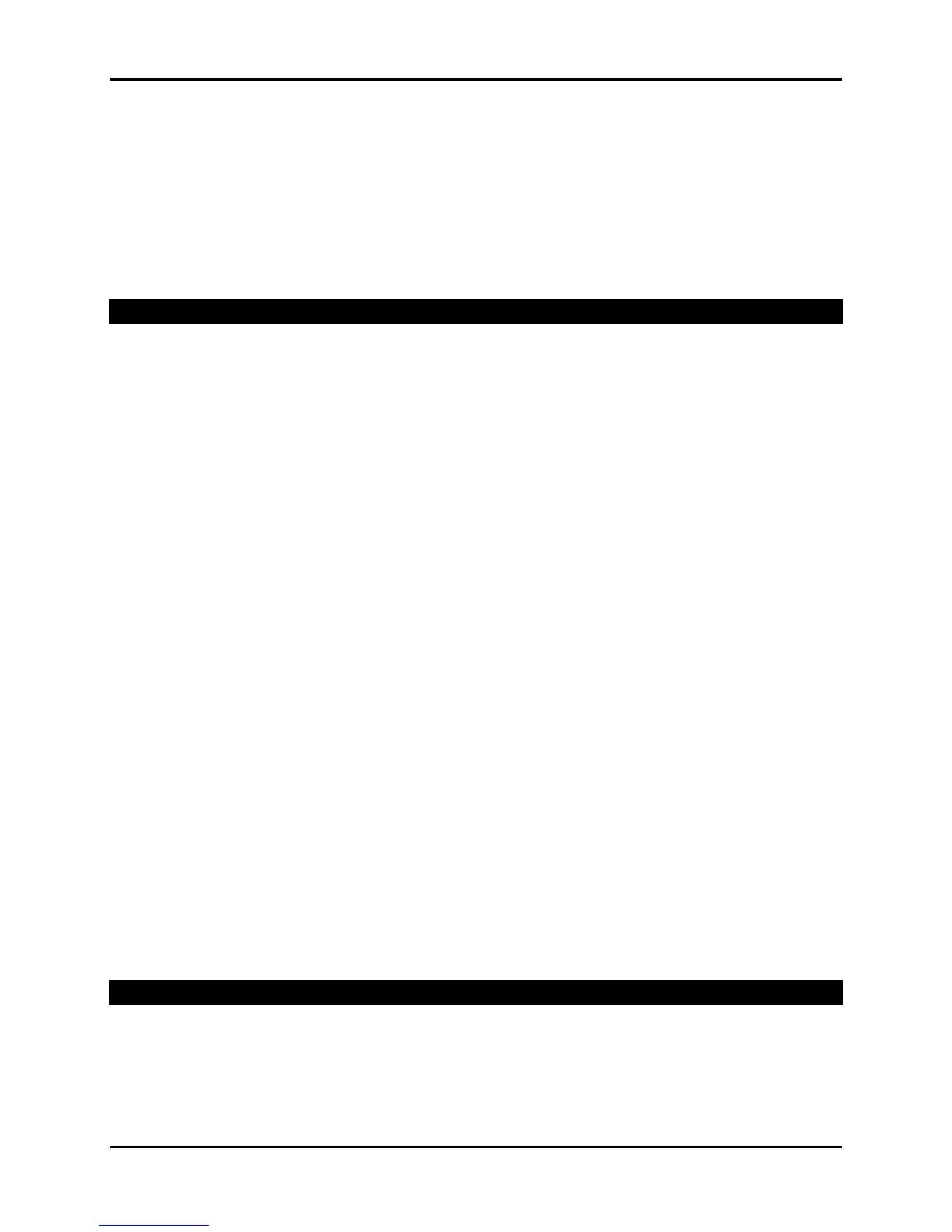TS-12 Musician’s Manual Section 7 — Effect Parameters
43
DETUNE - RATE Range: 00 to 99
Controls the LFO rate of detuning incorporated within the reverb. Detuning creates a slight pitch
shift into the reverberated signal, giving it a more natural sounding decay by breaking up
resonant nodes.
DEPTH Range: 00 to 99
Controls the depth of the detuning, that is, how much the pitch will change. Low values yield a
metallic sound. Some voices sound best with very low values.
70 PARAMETRIC EQ
PARAMETRIC EQ offers a minimum phase four band parametric EQ.
EQ TRIM Range: -24 to +00 dB
Allows you to adjust the input level trim to the EQs to eliminate the possibility of clipping
boosted signals.
BASS FC Range: 0000 to 1000 Hz
Sets the center of the low-frequency parametric.
LEVEL Range: -48 to +24 dB
Sets the amount of boost or cut applied to this low-frequency parametric.
TREBLE FC Range: 01 to 15 KHz
Sets the center-frequency of the high-frequency parametric.
LEVEL Range: -48 to +24 dB
Sets the amount of boost or cut applied to this high-frequency parametric.
MID-1 FC Range: 0000 to 9999 Hz
Sets the center of the mid-frequency parametric.
Q Range: 01 to 18
This parameter is a bandwidth control that determines the width of the resonant peak at the
center-frequency band. By raising the value you can produce a narrower bandwidth.
LEVEL Range: -48 to +24 dB
Sets the amount of boost or cut applied to this mid-frequency parametric.
MID-2 FC
Q
LEVEL
These three parameters are identical to the previous three parameters, and are used to control
different bandwidths within the mid range.
71 EQ- -COMPRESSOR
EQ- -COMPRESSOR combines an EQ with a full-feature compressor. For high compressor ratios,
this algorithm functions as a limiter. This algorithm operates by compressing (attenuating)
signals above the threshold and passing the signals below the threshold. For higher ratios and
lower thresholds, this algorithm can be used to create sustain. EQ exists in both signal and side
chain paths.

